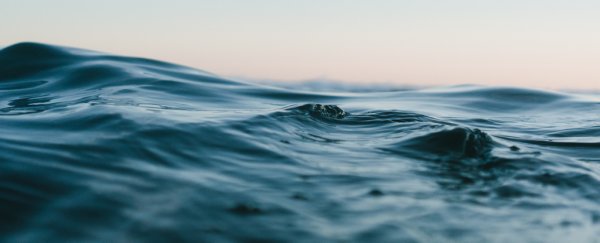It's fair to say that the world has had more than enough of viruses right now. Unfortunately, the converse is not necessarily true.
The incredible vastness of the virosphere is hard to overstate. While several thousand kinds of virus have been studied in detail, scientists say we haven't even scratched the surface. There could be trillions of species overall, some think.
Even more conservative estimates are mind-boggling. In the oceans, tens of millions of different kinds may lurk, and it's not exactly hard to find them: hundreds of thousands of new species can be identified if you go looking, in abundances that defy imagination: as many as 10 million viruses can be present in a millilitre of water.
Against all this viral enormity, it's reassuring to remind ourselves of two encouraging constants, both of which are explored in a new study led by marine ecologist Jennifer Welsh from the Royal Netherlands Institute for Sea Research (NIOZ).
In short: not every virus infects every living thing, and some animals actually prey upon viruses, in a sense, by removing them from the environment. Despite this valuable and under-appreciated public service, much of what underlies the phenomenon remains a mystery.
"Viruses are the most abundant biological entities in marine environments, however, despite its potential ecological implications, little is known about virus removal by ambient non-host organisms," Welsh and her team explain in a new paper.
In a series of experiments in the lab, the researchers examined how a range of these non-host marine organisms fared at removing viral particles from their aquatic environment – either via active predation, or via passive mechanisms, such as filter feeders and organisms that create physical barriers between viral parasites and their hosts.
Of the 10 different animal species tested, crabs, cockles, oysters, and sponges turned out to be the most effective at reducing viral abundance.
"In our experiments, the sponges reduced the presence of viruses by up to 94 percent within three hours," Welsh explains, although after a full 24 hours, that figure reached even 98 percent virus removal.
"Another experiment showed that the uptake of viruses happens indeed very quickly and effectively. Even if we offered new viruses to the water every 20 minutes, the sponges remained tremendously effective in removing viruses."
In comparison to the sponges tested, crabs were the second most effective, reducing viral abundance by 90 percent over 24 hours, while cockles managed 43 percent, and oysters 12 percent.
Of course, these impressive results from lab experiments might not be equally successful in the wild, given the range of behavioural changes that can occur in bio-diverse aquatic environments, not to mention a host of other environmental variables at play under the sea.
"The situation there is much more complex, as many other animal species are present and influence one another," Welsh says.
"For example, if an oyster is filtering and a crab comes along, it closes its valve and stops filtering. In addition, there are factors such as tidal currents, temperature, and UV light to consider."
Nonetheless, the researchers think that this natural ability of non-host animals to reduce the abundance of virus particles in marine environments is something we might be able to exploit one day – especially in aquaculture farming, where organisms like sponges could be used as a kind of shield to help protect farm populations from viral pathogens.
Whether or not that will be ultimately possible to implement remains to be seen, but it's clear, the team thinks, that this ongoing process of virus removal in the oceans is something that's been underestimated so far.
"The influence of non-host organisms in the ambient environment, really is a factor that has been overlooked in virus ecology", Welsh says.
The same kinds of themes explored in the team's paper are considered at even greater length in Welsh's PhD thesis, in which she considers how parasite-host interactions do not occur in an ecological vacuum, being affected by a variety of ambient fauna and flora mechanisms.
As it happens, Welsh will be defending the thesis this week. Due to the ongoing restrictions prompted by another virus – the ongoing COVID–19 pandemic – she will be forced to conduct her defence online, which will be a first for a NIOZ researcher.
"My apartment is very small," Welsh says, "so I may end up defending my thesis on my bed with my laptop."
The findings are reported in Scientific Reports.
